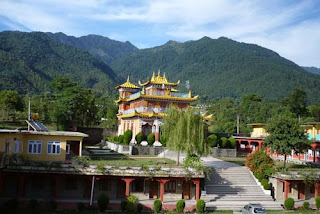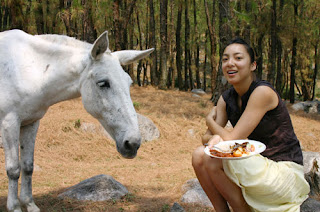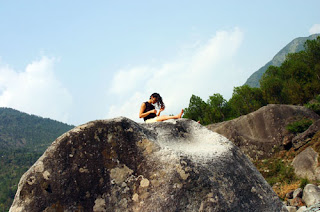Health is so fragile, so we must take care of our mind and body, and each other’s minds and bodies. It’s not like I forget this when I’m healthy, it’s just that when I get sick I’m especially reminded of it.
I don’t know how I got sick. I think it was inevitable since this is a new environment with new germs and bacteria, new weather, and new living conditions. I’m just so lucky that people here are so caring and I have the means to buy food and medicine. I have some kind of stomach flu virus/parasite. I’ve had this fever, nausea, dizziness and diarrhea since Sunday. I’ve spent more hours sleeping than awake. I’ll spare too many details, but I just have to say that having diarrhea and using a squat toilet isn’t the most fun. I ran into my friend Shahaf, who’s a volunteer from Israel, and he said that when he first came here, he had exactly what I have and that it’ll pass in a few days. Hopefully he’s right. Stomach sicknesses always make me feel so hollow. I barely have enough energy to leave my room. Today the fever has subsided, but the diarrhea and nausea are worse, so I went to see a Tibetan doctor. She gave me some traditional medicine and said that if I don’t get better by tomorrow, I should go to the Western hospital to test my stool. Julie, another volunteer here, went to the hospital to get the stool sample container for me just in case. It’s a tiny vile and I’m not sure how they expect people to get a stool sample to fit inside. It’s like the size of a bottle of nail polish with an opening less than 1cm wide. I included a picture, so I apologize if I gross you out.
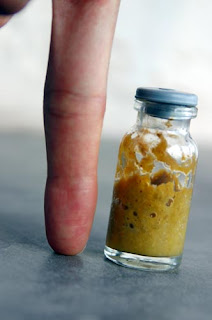
Before I got sick I started reading this book called, “The Tibetan Book of Living and Dying” by Sogyal Rinpoche. There is a part in the book that talks about the aftereffects of near-death experiences:
Perhaps one of its most important revelations is how it transforms the lives of those who have been through it. Researchers have noted a startling range of aftereffects and changes: a reduced fear and deeper acceptance of death; an increased concern for helping others; an enhanced vision of the importance of love; less interest in materialistic pursuits; a growing belief in a spiritual dimension and the spiritual meaning of life…”
This part of the passage has really stuck in my head, particularly the increased concern for others and importance of love part. And since being sick, I especially feel like nothing is more important than taking care of oneself and the people around you.
The full moon in May is Buddha’s birthday. This year it was on May 31st. It’s a very important day in the Buddhist community. Karma is multiplied by a thousand on this day, so all the good or bad deeds one does counts a thousand times over. In Dharamsala, the most devout Buddhists woke up early for the 4am sermon given by HH the DL at his residence, Namgyal Monastery. Then all day people walked along the khora chanting prayers or om mani padme hum, a prayer for compassion. The khora is the path that circumnavigates the edge of the DL’s temple. I headed up there with Choedar early Thursday morning, and already there were thousands of people in and around Namgyal Monastery. Inside the temple devotees were doing full prostrations and circumambulating the inner temple walkway. Other devotees were sitting and meditating or chanting. It was absolutely packed. There was a HUGE basin of rice and another basin full of lentils on the courtyard. Bucket by bucket, the monks filled the basins full of food. The streets and the khora path were full of beggars from all over northern India.
Many of the beggars here are in terrible health with conditions like elephantitus (when parts of the body become so swollen it’s as big as an elephant’s body parts), leprosy, sexually transmitted infections, disfigured or missing body parts, and malnutrition. Sometimes when there are many women in a group, they will take turns holding the babies and go out in shifts to beg. Sometimes they beg for money, and sometimes they beg for milk. When they beg for milk, they return the unopened containers to the shops for a refund.
The other night, I went to Miri’s (an Israeli women who’s studying Buddhism here) house for dinner. It was a small group of us – Miri, Shahaf, Shunni and myself. The three of them are from Israel, and all devout Buddhist students. They met in Israel in a group called Dharma Friends. Shahaf told me that 80% of Jewish Israelis are not practicing Jews or religious. I had no idea! He said that Jews living outside of Israel are more religiously Jewish than those living in Israel. It was my first time meeting Shunni and I was so struck by her energy. She’s been coming to Dharamsala for the past ten years since she was 22 years old. Her face and demeanor is so expressive of her desire to deepen her Buddhist practice, and her compassion for people and animals. When I met her, she had literally just come out of a 10-day meditation retreat where she had barely slept or eaten.
After the dinner Shahaf and I walked her back to her hotel. Everything closes fairly early here and the streets are empty by 9:30p so leaving Miri’s house at 10:30p was really late. Along the way we passed a family of beggars sleeping on the side of the road. An infant lay between its parents crying. And while most people probably would have walked on by, Shunni went up to the family and sang a mantra of compassion for the baby. And she did the same for all of the stray dogs we passed. She said that she does it because it might help them have a better rebirth for the next life. Her compassion is really moving.
This past Sunday before feeling woozy, I woke up early to attend a teaching given by HH the DL at the Tibetan Children’s Village school. It was about an hour and half hike from where I live. HH was inside the auditorium addressing TCV students while the overflow sat outside underneath a large tarp. I sat on a nearby hillside listening to a translation of the teaching on an FM radio I borrowed. Since coming here I’ve seen countless photos and images of HH the DL. So I didn’t expect that I would react the way I did when I saw him in person. At the end of the teaching, everyone outside lined up to see HH exit the building and get into his car. Somehow I snuck up to the front of the line near his car. I honestly didn’t realize how moved I would be by his presence, but he emanates a powerful energy. Before I knew it, my eyes welled up in tears. He bowed humbly to all of us as his car drove away.
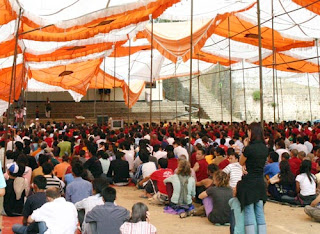
 a stone shrine near TCV
a stone shrine near TCV
